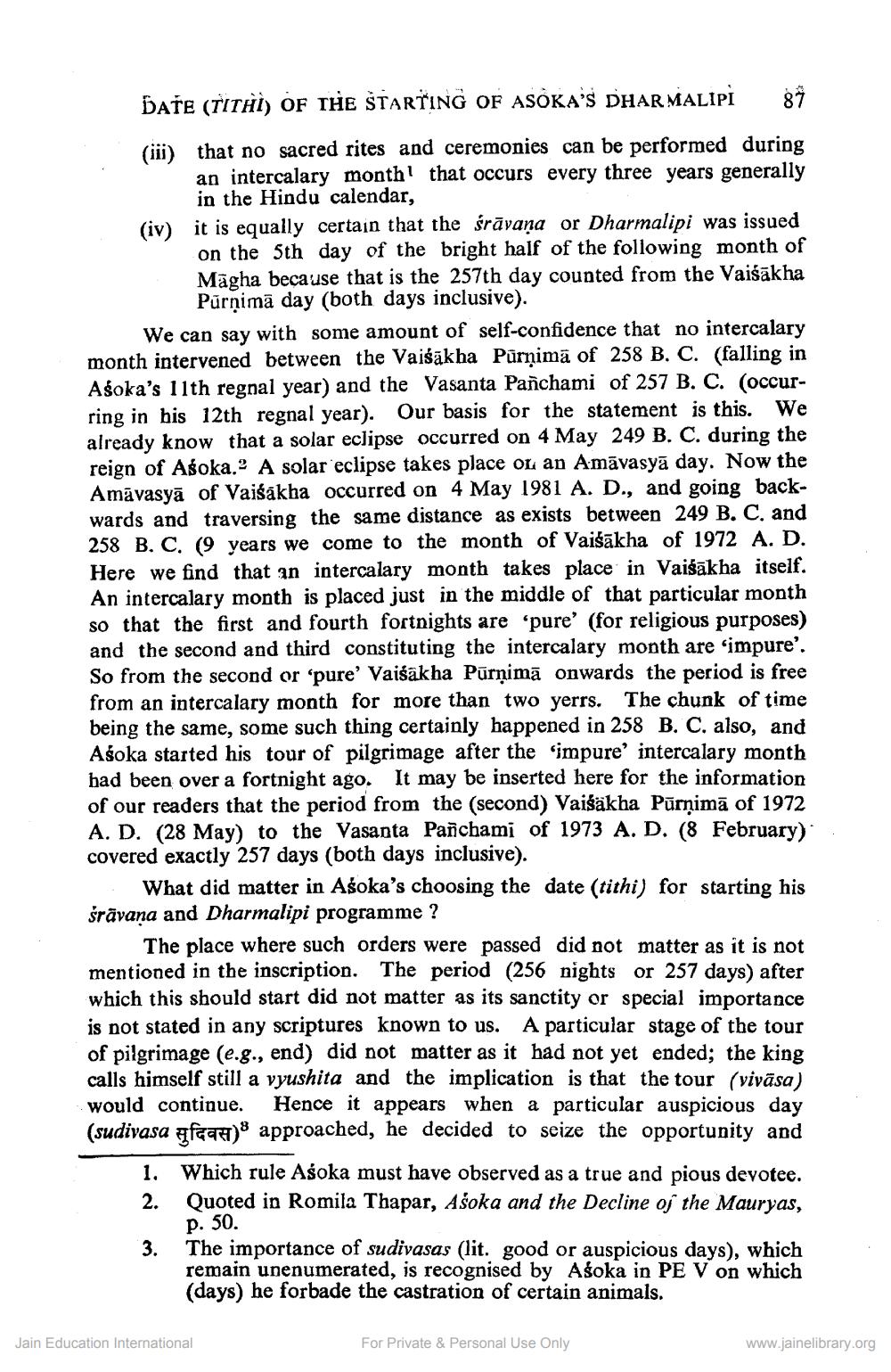________________
DATE (TITHI) OF THE STARTING OF ASOKA'S DHARMALIPI
87
(iii) that no sacred rites and ceremonies can be performed during an intercalary month that occurs every three years generally in the Hindu calendar,
(iv) it is equally certain that the śrāvana or Dharmalipi was issued on the 5th day of the bright half of the following month of Magha because that is the 257th day counted from the Vaišākha Purnima day (both days inclusive).
We can say with some amount of self-confidence that no intercalary month intervened between the Vaisakha Purnima of 258 B. C. (falling in Aśoka's 11th regnal year) and the Vasanta Panchami of 257 B. C. (occurring in his 12th regnal year). Our basis for the statement is this. We already know that a solar eclipse occurred on 4 May 249 B. C. during the reign of Asoka.2 A solar eclipse takes place or an Amavasya day. Now the Amavasya of Vaisakha occurred on 4 May 1981 A. D., and going backwards and traversing the same distance as exists between 249 B. C. and 258 B. C. (9 years we come to the month of Vaišākha of 1972 A. D. Here we find that an intercalary month takes place in Vaisakha itself. An intercalary month is placed just in the middle of that particular month so that the first and fourth fortnights are 'pure' (for religious purposes) and the second and third constituting the intercalary month are 'impure'. So from the second or 'pure' Vaisakha Pūrṇima onwards the period is free from an intercalary month for more than two yerrs. The chunk of time being the same, some such thing certainly happened in 258 B. C. also, and Aśoka started his tour of pilgrimage after the impure' intercalary month had been over a fortnight ago. It may be inserted here for the information of our readers that the period from the (second) Vaišäkha Pūrṇimā of 1972 A. D. (28 May) to the Vasanta Panchami of 1973 A. D. (8 February) covered exactly 257 days (both days inclusive).
What did matter in Aśoka's choosing the date (tithi) for starting his śrāvaṇa and Dharmalipi programme ?
The place where such orders were passed did not matter as it is not mentioned in the inscription. The period (256 nights or 257 days) after which this should start did not matter as its sanctity or special importance is not stated in any scriptures known to us. A particular stage of the tour of pilgrimage (e.g., end) did not matter as it had not yet ended; the king calls himself still a vyushita and the implication is that the tour (vivāsa) would continue. Hence it appears when a particular auspicious day (sudivasa ft) approached, he decided to seize the opportunity and
2.
1. Which rule Aśoka must have observed as a true and pious devotee. Quoted in Romila Thapar, Asoka and the Decline of the Mauryas, p. 50.
3.
The importance of sudivasas (lit. good or auspicious days), which remain unenumerated, is recognised by Aśoka in PE V on which (days) he forbade the castration of certain animals.
Jain Education International
For Private & Personal Use Only
www.jainelibrary.org




